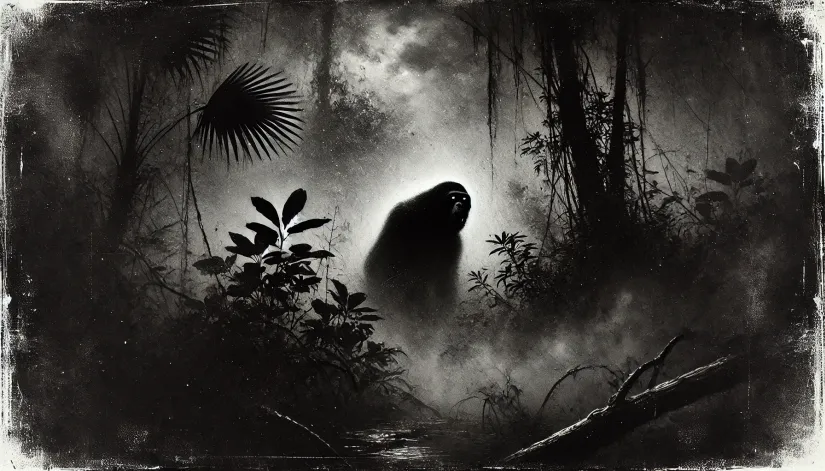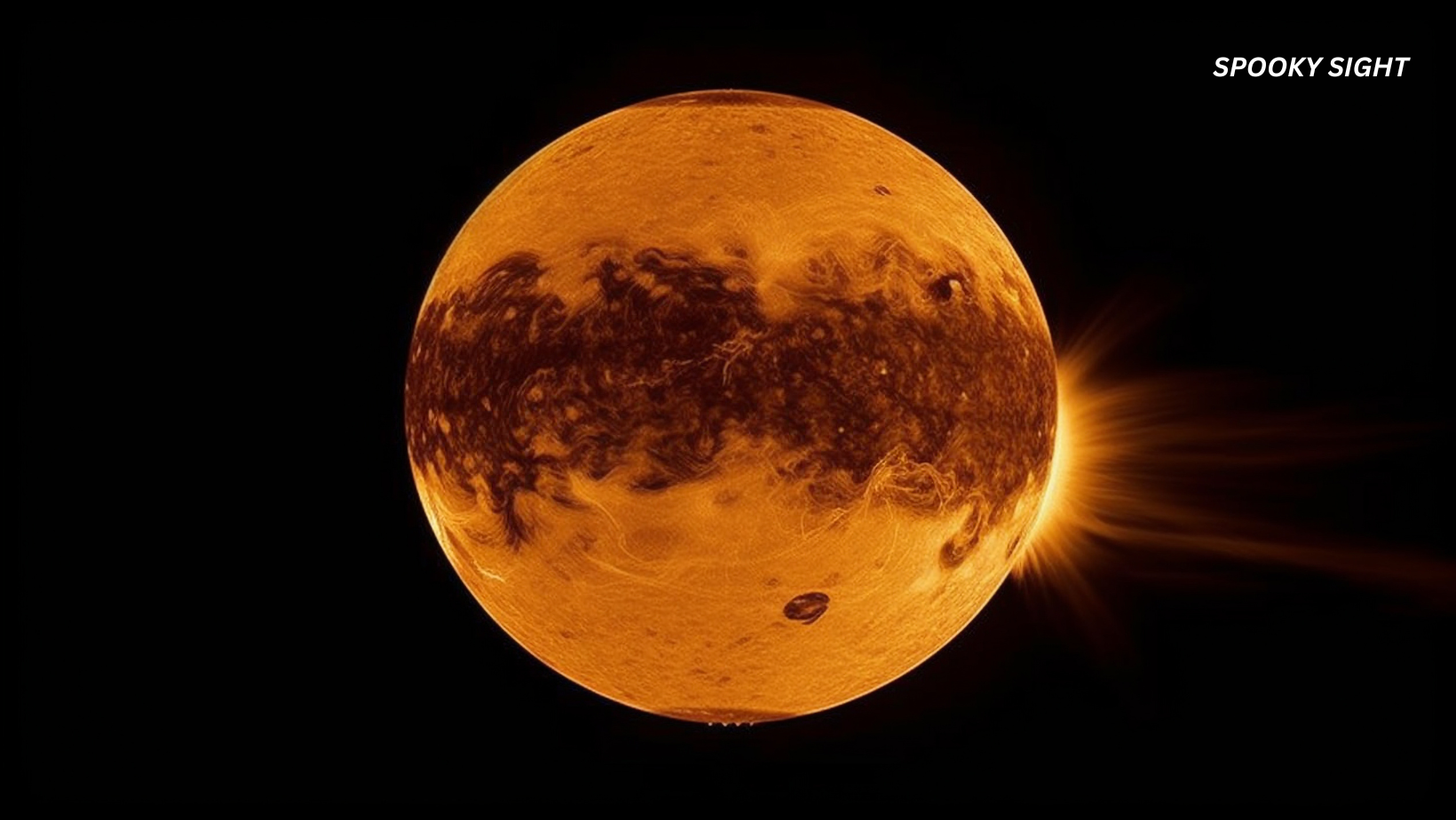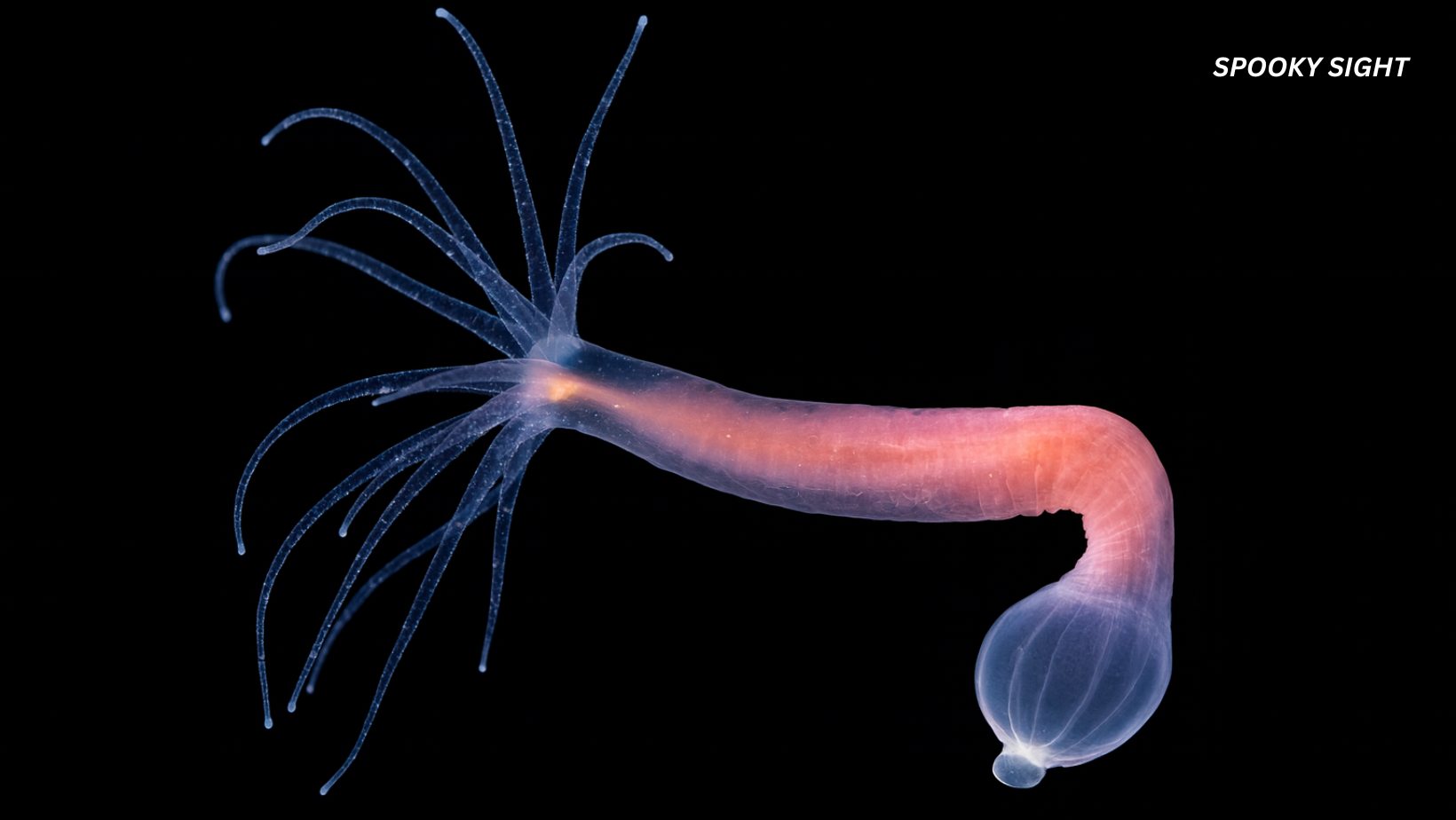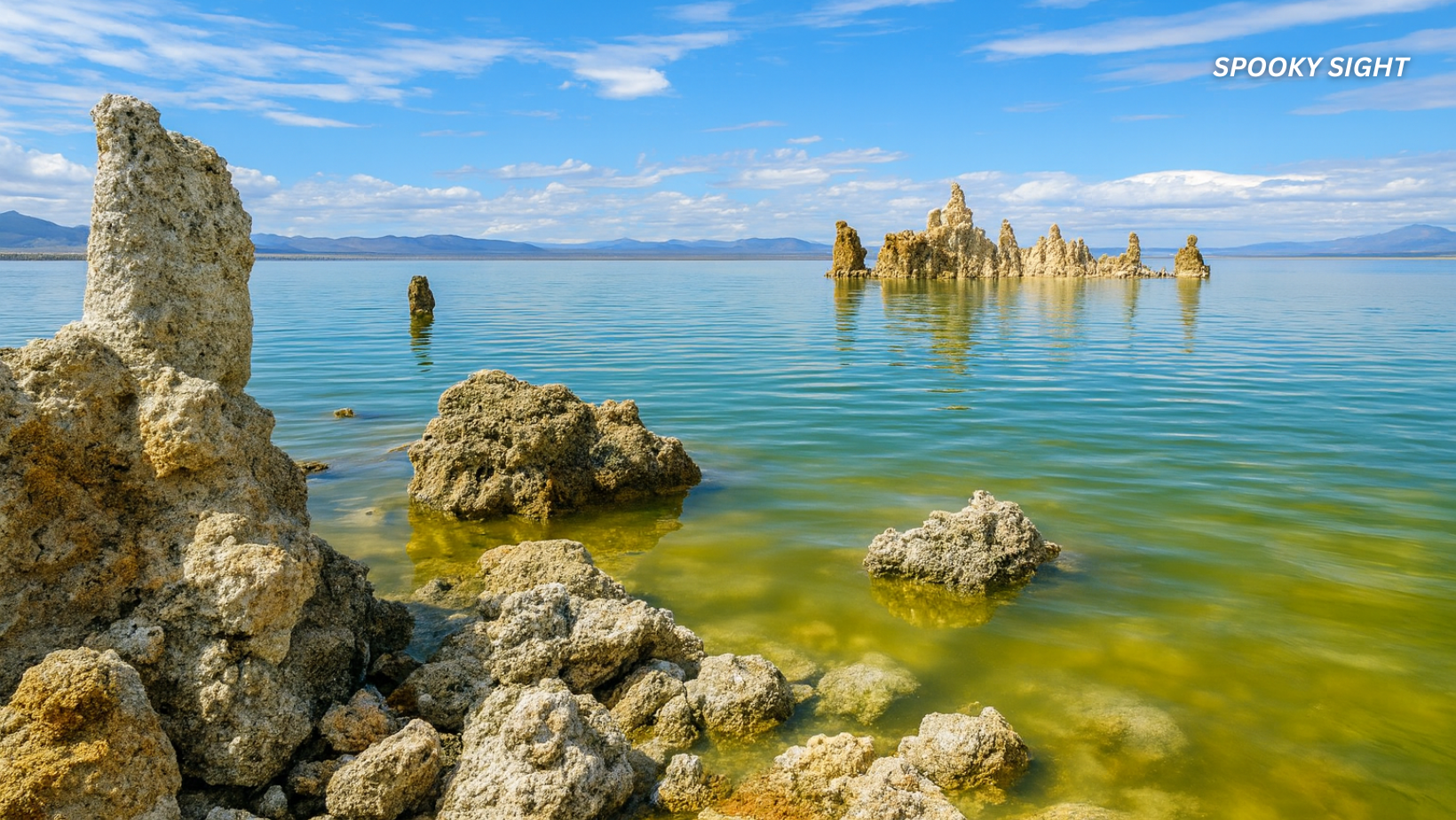The Skunk Ape—Florida’s answer to Bigfoot—is a creature cloaked in mystery. It allegedly roams the dense, humid swamps of the Everglades and has gained infamy for its pungent odor. In fact, its smell is so repulsive that people who claim to have encountered the cryptid say they will never forget it.
But here’s the big question: could such a creature actually exist? Or is it just a product of wild imaginations and mistaken sightings?
Here’s everything we know about this North American cryptid:
In this article:
Origins and History
The Skunk Ape’s story is deeply tied to Florida’s history and culture. It all starts with Native American legends.
For instance, the Seminole Tribe told tales of a “Stink Ape,” a massive creature with an unbearable smell. According to their stories, this beast was both feared and respected for its power and cunning.
Meanwhile, the Miccosukee Tribe had their own version, calling it “Esti Capcaki” or “Furry Tall Man.” Their legends speak of a nocturnal beast that hides deep in the untamed Everglades, particularly in remote areas like Big Cypress Swamp and Fakahatchee Strand.

What Does the Skunk Ape Look Like?
So, what does this mysterious cryptid look like? The Florida Bigfoot is usually described as bipedal, standing between 6 and 8 feet tall. Its body is covered head to toe in dark, shaggy fur and—of course—emits an overwhelming stench.
Witnesses often compare its smell to a mix of rotten eggs, wet dogs, and decaying plants. Gross, right?
According to various reports, the beast also has glowing red eyes and long, muscular arms. It looks like a giant ape—hence the name.
Some accounts suggest its fur is matted with mud and swamp debris, making it nearly impossible to spot in its natural habitat. It’s like a natural camouflage. And on top of that, the monster can allegedly move without making a sound—even through dense vegetation.
Many often compare the Everglades cryptid to Bigfoot. However, I don’t think that’s an accurate comparison. Why? Because there are quite a few differences between these two North American cryptids.
For instance, the Skunk Ape is smaller. And more agile. If it exists, it appears perfectly adapted to Florida’s swampy terrain.
Another common comparison is to Yeti. Again, that’s not an accurate comparison either. Leaving aside how different the two cryptids look, their specific environments are entirely different, too.
What about sounds? Reports mention low growls, guttural grunts, and ear-piercing screams echoing through the swamps. However, it is worth noting that while some of these sounds have been captured on audio, experts couldn’t really say for sure if they belong to an undiscovered species or to Florida’s specific wildlife.

Notable Sightings and Evidence
The first recorded Skunk Ape sighting by settlers happened in 1818 near Apalachicola. According to records, a few witnesses encountered a “man-sized monkey” stealing food and stalking fishermen. But that wasn’t the end of it.
Throughout the 19th and 20th centuries, more similar reports popped up. People often heard strange growls and loud screeches deep within the swamps. Some even claimed to spot shadowy figures lurking in the trees.
One unforgettable story happened in 1942. A Suwannee County resident claimed that a large, hairy figure jumped onto his car’s running board and stayed there for nearly half a mile before vanishing into the woods.
Things escalated in the 1960s and 1970s. That’s when Bigfoot sightings gained national attention, and Floridians began reporting their swampy encounters. These reports made many cryptozoologists launch expeditions into Florida’s wilds.
Reports of massive footprints, bent tree limbs, and disturbed wildlife added fuel to the fire. Some folks even claimed to have recorded some of the monster’s strange howls and screams.
Another interesting aspect is that sightings weren’t isolated to one area. They spanned from the Green Swamp to the Loxahatchee River.
One of the most famous incidents occurred in 2000. Known as the “Myakka Skunk Ape“ photos, they were allegedly taken by a local woman. The images show a large, ape-like figure with glowing eyes peeking from the bushes. However, skeptics argue the photos were staged.
In 2013, a group of kayakers in the Everglades said they saw a tall, dark figure standing at the water’s edge. When they got closer, it vanished into the foliage.
Another incident that same year involved a farmer finding human-like footprints on his land after hearing strange noises at night. The tracks measured over 13 inches and were later examined by local experts.
Of course, not all evidence is foolproof. Many skeptics attribute sightings to bears, escaped exotic animals, or outright hoaxes. But enthusiasts argue that some findings, like footprint castings with dermal ridges, suggest something real.

Is Skunk Ape Real?
Now, here’s the big question: Is the Skunk Ape real? If the cryptid doesn’t exist, what else could explain the sightings? Well, there are a few theories that could offer plausible answers.
First, many sightings might simply be cases of mistaken identity. This is often the case with most cryptids.
Florida’s swamps are home to black bears, which can appear bipedal when standing on their hind legs. A bear foraging for food might resemble a large, ape-like creature at a distance, especially in dim lighting.
Escaped exotic animals, such as orangutans or chimpanzees, also contribute to this theory. Why could this be a viable explanation? Because Florida’s history of exotic pet ownership and illegal wildlife trade supports this possibility.
Feral primates—descended from escaped monkeys brought to Florida decades ago—offer another plausible explanation. Groups of rhesus macaques (or other primates) have been observed in the wild and could account for some sightings.
Large feral hogs or wild boars—common in the region—might also be mistaken for crouching or low-moving Skunk Apes. Plus, their bizarre grunting and squealing could easily be mistaken for noises made by an unknown species.
How about the foul smell? The infamous stench associated with the Skunk Ape could also be attributed to several natural sources. Diseased animals, such as infected alligators or carrion-feeding vultures, often emit foul odors.
A fungal infection-like mange in mammals could cause a strong, unpleasant smell (particularly in bears or other large wildlife).
To make things even worse, pranksters and attention-seekers have fabricated footprints and staged encounters to fuel the Skunk Ape mythos over the years. While some evidence—like dermal ridges on footprint castings—is more challenging to dismiss, the prevalence of hoaxes casts doubt on many reports.
On the other hand, some suggest that the Skunk Ape could indeed be an undiscovered species. Cryptozoologists point to consistent patterns in sightings and evidence. The many similar footprint sizes and behavioral descriptions can count as potential proof.
And it’s not a far-reaching idea. The Everglades’ vast, uncharted wilderness could hide a small population of reclusive primates.
Visiting Skunk Ape Landmarks
Of course, as is often the case with famous cryptids, the Skunk Ape has become a popular tourist attraction.
If you’re itching to explore Skunk Ape territory, Florida has you covered. The Skunk Ape Research Headquarters in Ochopee is a great place to start. This quirky spot features exhibits on sightings, footprint castings, and even souvenirs.
Plus, the owner has spent decades collecting evidence and stories about the creature.
Then there’s the Big Cypress National Preserve and Everglades National Park. These vast wilderness areas are prime locations for sightings. If you plan a visit, here’s my advice: pack bug spray, wear sturdy boots, and bring a camera.
The best times for spotting wildlife—and maybe the Skunk Ape—are early morning and late evening. Local guides often offer tours and tips for navigating these areas safely.
For die-hard fans, annual cryptid conventions and guided “Skunk Ape hunts” are a must. These events bring together researchers, enthusiasts, and curious locals.
Expect expert talks, activities, and plenty of opportunities to swap stories with other believers. And who knows? You might even catch a glimpse of the bizarre cryptid itself.
The conventions often feature displays of cast footprints, recorded audio evidence, and detailed maps of reported sighting locations.







